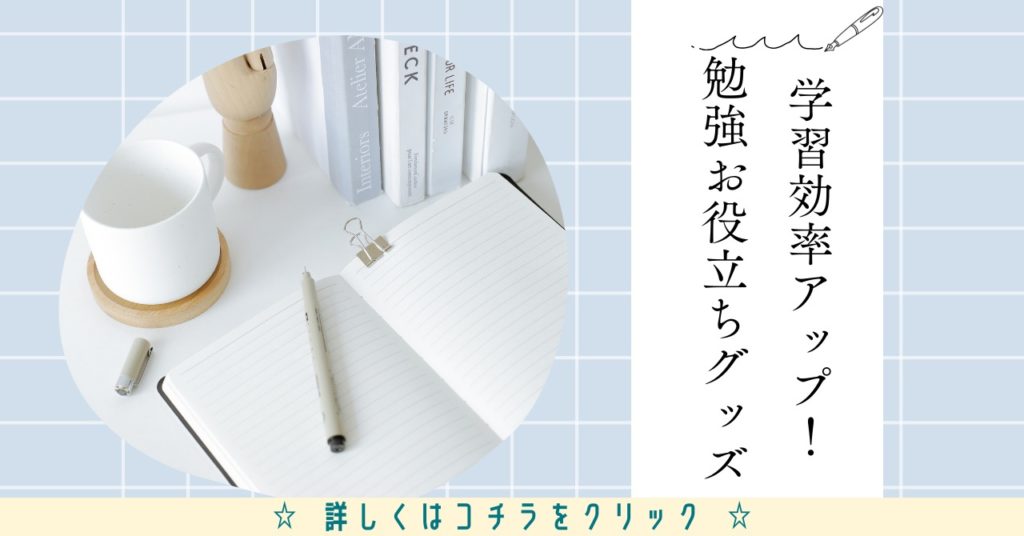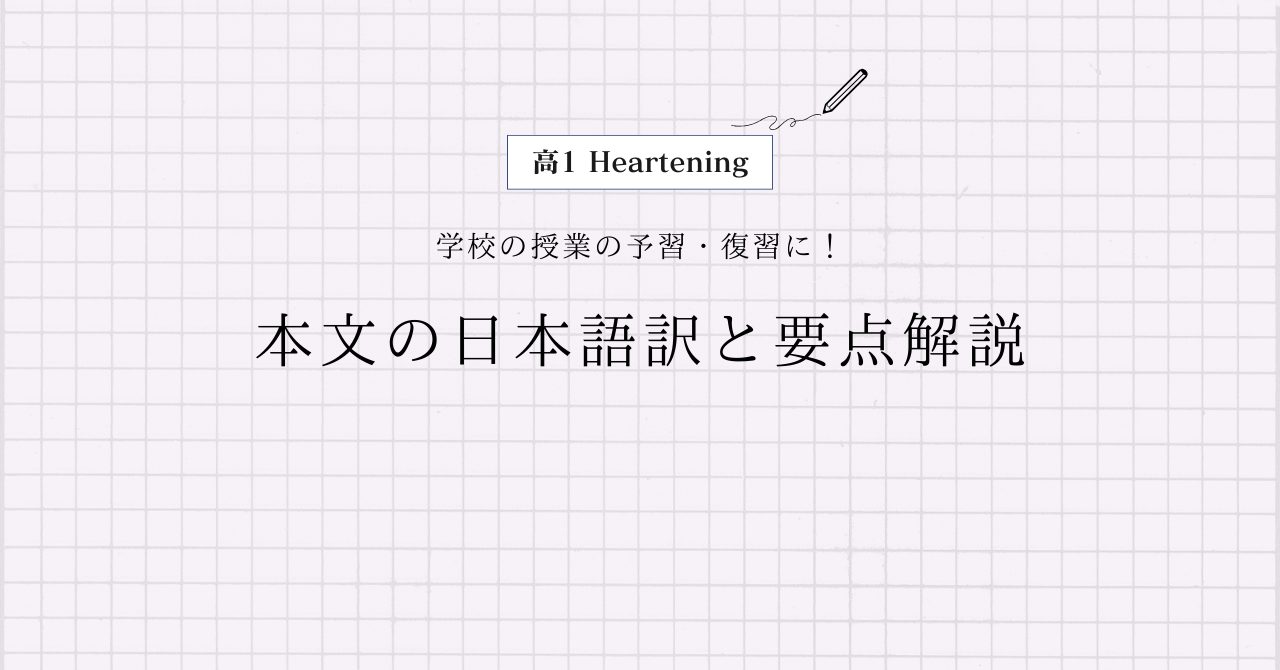桐原書店 高1Heartening Reading1 Section4の本文の日本語訳と重要箇所の解説です。
Reading1-1, 1-2, 1-3の解説はこちらからご覧ください。
>高1Heartening Reading1 Section1 本文和訳
>高1Heartening Reading1 Section2 本文和訳
>高1Heartening Reading1 Section3 本文和訳
- Heartening Reading1 Section4 本文と日本語訳
- Heartening Reading1 Section4 重要事項の解説
- It is getting darker outside.
- At the dining room table, Mrs. Lord is helping him to write a sentence.
- “Let’s try ‘The cow is brown,”‘she says. “First word the.”
- The man checks his list of words.
- Then, on a clean sheet of paper, he writes: The.
- He knows that word and writes it.
- He thinks for a second, then writes brown at the end of the sentence he has built.
- “Right!” Mrs. Lord says. “End of sentence!”
- The man looks up.
- There is pride in his eyes.
- “I can’t wait until I can write a letter,” he says.
- “The first letter is going to be to my wife.
- I’m going to tell her how much I love her.”
- On the cover of this magazine every month there is a slogan: “Man At His Best.”
- Once in a while, when you really aren’t expecting it, you find out what that means.
- Heartening Reading1 Section4 まとめ
Heartening Reading1 Section4 本文と日本語訳
It is getting darker outside.
「外は暗くなってきています。」
At the dining room table, Mrs. Lord is helping him to write a sentence.
「ダイニングルームのテーブルで、ロード夫人は彼が文を書くのを手伝っています。」
“Let’s try ‘The cow is brown,”‘she says. “First word the.”
「『”The cow is brown”と書いてみましょう。最初の単語は”the”です。』と彼女が言います。」
The man checks his list of words.
「男性は単語のリストを確認します。」
Then, on a clean sheet of paper, he writes: The.
「それから、白紙に”The”と書きます。」
“Good,” Mrs. Lord says. “Next word, cow.”
「『いいですね。次の単語は”cow”です。』とロード夫人が言います。」
He checks his list and writes the word.
「彼はリストを確認して、その単語を書きます。」
“Very good,” Mrs. Lord says. “Now is.”
「『素晴らしい。では”is”です。』とロード夫人が言います。」
He knows that word and writes it.
「彼はその単語は知っていて、それを書きます。」
“Now brown,” Mrs. Lord says.
「『では”brown”です。』とロード夫人が言います。」
He thinks for a second, then writes brown at the end of the sentence he has built.
「彼は一瞬考えて、それから彼がつくっている文の最後に”brown”と書きます。」
“Right!” Mrs. Lord says. “End of sentence!”
「『そうです!文は完成です!』とロード夫人が言います。」
The man looks up.
「男性は見上げます。」
There is pride in his eyes.
「彼の目には誇りが見えます。」
“I can’t wait until I can write a letter,” he says.
「彼は言います。『手紙を書けるようになるまで待ちきれないです。』」
“The first letter is going to be to my wife.
『最初の手紙は妻宛てにします。』
I’m going to tell her how much I love her.”
『私がどれほど彼女を愛しているか伝えるつもりです。』
On the cover of this magazine every month there is a slogan: “Man At His Best.”
「この雑誌の表紙には毎月、『最高の自分になる』という標語が載っています。」
Once in a while, when you really aren’t expecting it, you find out what that means.
「時々、あなたがあまり予期していないときに、それが何を意味するか分かるでしょう。」

Heartening Reading1 Section4 重要事項の解説
It is getting darker outside.
天候に関する表現のときは主語を“It”にします。訳す必要はありません。
“get 形容詞”は「~になる」という重要表現ですね。ここでは「現在進行形」になっています。
“dark”は「暗い」という形容詞で「比較級」になっていますね。
“outside”は「外に」といった副詞です。
At the dining room table, Mrs. Lord is helping him to write a sentence.
“dining room”は「ダイニングルーム」という名詞になります。
“help 名詞 動詞の原形”は「名詞が~するのを助ける・手伝う」という重要表現で、ここでは「現在進行形」になっていますね。
“sentence”は「文」という名詞です。
“Let’s try ‘The cow is brown,”‘she says. “First word the.”
“Let’s 動詞の原形”は「~しましょう」ですね。
同じ意味で“Shall we~?”や“Why don’t we~?”もあるのでセットで覚えましょう!
“try”は「をやってみる、に挑戦する」という動詞です。
“first”は「初めての、最初の」という形容詞でになります。
The man checks his list of words.
“check”は「を確かめる」という動詞で、“list”は「リスト、一覧表」という名詞です。
“of”は前置詞で,”A of B”の形で「BのA」というように後ろから前に訳します。
Then, on a clean sheet of paper, he writes: The.
“then”は「それから、その後」といった副詞です。
“clean sheet of paper”は「白紙」という名詞ですね。
「:」は「コロン」と言い,簡単に言うと「つまり」という具合に直前の文章を補足します。コロンを使うときは,コロンの前は必ず文にしないといけない点に注意してください。
He knows that word and writes it.
“know”の後ろには「接続詞that」が省略されていますね。
この文の“that”は「その」という形容詞です。
“it”は“is“を指しています。
He thinks for a second, then writes brown at the end of the sentence he has built.
“for a second”は「一瞬、少しの間」、“at the end of~”は「~の終わりに」といった表現です。
“he has built”の前には「目的格の関係代名詞which/that」が省略されていて、先行詞“the sentence”を修飾していますね。
“built”は“build(をつくる、建てる)”の過去分詞形で、ここでは「現在完了の完了用法」になっています。
“Right!” Mrs. Lord says. “End of sentence!”
“right”は会話で使うと「その通りだ」といった意味になります。
“end of~”は「~の終わり」という表現ですね。
The man looks up.
“look up”は「見上げる」という表現です。
There is pride in his eyes.
この文は「there構文」になっていますね。
“pride”は「誇り、自慢」といった名詞です。
“I can’t wait until I can write a letter,” he says.
“wait”は「待つ」という動詞、“until”は「~まで」という接続詞で、“can’t wait until~”で「~を待ちきれない」という表現になります。
“The first letter is going to be to my wife.
この文は「未来形」になっていますね。“wife”は「妻」という名詞です。
“be going to”はあらかじめ決めている未来を示します。“will”だとその場で決めた未来を示しますよ。
I’m going to tell her how much I love her.”
この文も「未来形」になっていますね。
“tell 人 もの”で「人にものを言う・伝える」となって,“tell もの to 人”でも同じ意味になります。
“how much I love her”は「間接疑問文」になっていて、“how much”は「どれくらい」という程度を示す疑問詞です。
On the cover of this magazine every month there is a slogan: “Man At His Best.”
“cover”は「表紙、カバー」、“magazine”は「雑誌」、“slogan”は「標語、スローガン」という名詞です。
“of”は後ろから前に訳しましたね。
“every”は「毎~」という形容詞で、後ろには名詞の単数形を置き、全体としても単数扱いになります。
また、この文は「there構文」になっていますね。
“at one’s best”は「最高の状態で、絶好調で」という表現で、“one’s”には所有格が入ります。
“Man At His Best”は「最高の自分になる」と訳しました。
Once in a while, when you really aren’t expecting it, you find out what that means.
“once in a while”は「たまに、時々」といった副詞表現です。「接続詞when」も使われていますね。
“not~really”は「あまり~ではない」という意味で、“expect”は「を予期する、期待する」という動詞になります。ここでは「現在進行形」になっています。
“it”と“that”は“Man At His Best”を指しています。
“find out”は「を分かる、理解する」といった重要表現で、“what that means”は「間接疑問文」になっています。
“mean”は「を意味する」という動詞です。
Heartening Reading1 Section4 まとめ
以上がHeartening Reading1 Section4の日本語訳となります。
>高1Heartening Reading1 Section1 本文和訳
>高1Heartening Reading1 Section2 本文和訳
>高1Heartening Reading1 Section3 本文和訳
何か分からない点や他に解説してほしい点があれば,お気軽にコメントしてください!


コメント